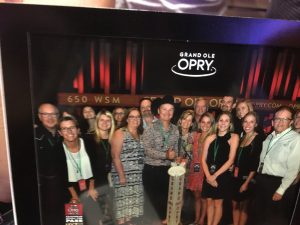Why You’re Struggling to Fill That Open Job Vacancy
By Michaela Picones |
4.1 min read

Companies are in need of workers. The labor shortage was something that many anticipated but layered with the pandemic and now the great resignation, the struggle to recruit and retain employees is amplified. With a lack of people to do the work that needs to be done, an organization’s competitiveness and growth potential are threatened. A large and rising number of individuals are jobless, eager to find employment or expand their hours. However, because of the methods that most organizations employ to identify talent, there are individuals who are “hidden” from most enterprises that might benefit from hiring them.
According to a study Harvard Business Review conducted, there are “hidden workers” and untapped talent in our midst. HBR coined the term “hidden worker” since it was important “to hone in on language that reflected the effects that companies’ policies, practices, and deployment of technology have on their capacity to identify and access various pools of talent.” Hidden workers are an untapped talent pool that has been created due to the hiring processes that have been created that focus on what individuals don’t have (like, credentials). Automated hiring systems are excluding individuals and reducing them to a piece of paper, not taking the time to look at the individual as the complex human beings they are.
At Predictive Success, we look at the whole person: their head, heart, and briefcase. To get some insight into someone’s mind: we use science, the PI Behavioural and Cognitive Assessment. To understand their heart, we use the tools within the PI portal that allow employer-employee relationships to be strengthened. Someone’s briefcase consists of their knowledge, skills, and experience, and this can change over time. Employees are becoming more selective about their employers and employers can’t afford to keep the revolving door of talent going.
Reforming the approach to talent acquisition
Enlisting a senior leader to champion, direct, and monitor the evolution of talent acquisition practices.
Hiring hidden workers is a strategic response for addressing a pressing challenge—filling the ever-widening skills gap. Making hidden workers integral to a company’s talent management strategy by reforming the relevant human resource policies will require ongoing sponsorship and oversight.
Refreshing Job Descriptions.
Most companies add new skills and experience preferences to existing job descriptions rather than re-evaluating those descriptions from scratch. What is the actual job to be done? Are the individuals you are screening behaviourally aligned with what the role entails? Having a behavioral job model can help organizations ensure that the individual who is doing the job loves and is naturally wired to do the work. As opposed to the current practice of looking for individuals with dated “requirements” and “nice to have” attributes rather than a focus on a limited list of “must-have” skills and experiences that correlate to performance in the role.
“Affirmative” filters in ATS or RMS.
An ATS/RMS largely relies on “negative” logic to winnow the applicant pool. Workers are excluded from consideration due to variables such as the lack of a college degree or a gap in their employment history. While employers may infer that applicants who have those attributes are undeserving of consideration, applying an “affirmative” logic would seem a more logical approach for seeking talent. Configuring systems to identify applicants with the specific skills and experiences associated with fulfilling the core requirements of the role would promise to be more efficient and inclusive. Implementing a thoughtful and deliberate process, like the Talent Optimization framework can help create and establish innovative talent acquisition practices. Recruiters and the talent acquisition processes ought to be evaluated on metrics such as the time it takes for a new employee to achieve expected levels of productivity, attrition rates, and rates of advancement.
Adopting a customer-experience mindset in designing recruitment and onboarding processes.
Anyone who has gone through the job-seeking process as of late knows how frustrating it can be. There is a multitude of different platforms that all require you to take multiple and repetitive steps to apply for a role. To remediate this problem, organizations need to apply a user experience (UX) lens and redesign their strategy and processes on attracting talent. Leaders can leverage technology to help enable culture change and adopt new ways of working. With active management of what goes into our systems solutions, leaders can monitor for and address bias, manage performance, and scale for adoption.
The people challenges that businesses encounter are like a tidal wave that sweeps over the entire organization. It is the active management of leaders, empowered by “people data”, that will eliminate this. Leaders have the ability and due to the nature of recent events, redirect their focus on their people. By resetting their talent acquisition practices, they can create a culture of inclusive hiring practices that enable them to access the broadest skilled talent pools.
References:
https://www.hbs.edu/managing-the-future-of-work/Documents/research/hiddenworkers09032021.pdf
Related Blogs
Coaching and Development Tools Every Manager Needs
The Importance of Coaching and Development in the Workplace Coaching and development are essential to business success, improving both team performance and individual employee growth. Effective coaching drives talent optimization, aligns team goals, and creates
From Olympic Success to Workplace Mastery: Using Behavioral Analytics and Coaching for Peak Performance
The Parallels Between Olympic Success and Business Performance The 2024 Summer Olympics in Paris once again showcased not only the brilliance of athletes but also the power behind them: their coaches. While the world focused
How Talent Management Systems Revolutionize Employee Retention
Understanding Talent Management Systems Talent management systems (TMS) are comprehensive platforms designed to optimize various aspects of human resources, from recruitment to employee development. These systems streamline and enhance the entire employee lifecycle, ensuring organizations


